5 Arkansas Press Association PUBLISHER WEEKLY
How do we get our readers back? A better question might be, “How do we grow new readers?”

By Kevin Slimp

How do we get our readers back? A better question might be, “How do we grow new readers?”

By Kevin Slimp
What can be more encouraging for the future of community newspapers than the emergence of a talented and committed young journalist?
At 27, Destin Davis has already advanced to the editor’s position at The Saline Courier, experiencing great satisfaction in telling the stories of the people in his home area.
Davis was born in Little Rock and grew up and graduated from high school in Bryant. He went on to the University of Arkansas at Fayetteville, earning a bachelor’s degree in political science with a minor in history in 2019.
In line with his college major, Davis interned for U.S. Rep. French Hill and U.S. Sen. Tom Cotton with an eye toward establishing a career in the political field. But he became somewhat disenchanted with the world of politics, determining it was not his correct career path.
“After the 2020 elections, I realized how volatile the political environment was and wanted to do something else,” Davis said. “It just wasn’t the place for me. Journalism was the perfect avenue because it allowed me to stay involved in the things I am most passionate about without being held to the constraints of political parties.”
care personally about what I am doing.”
Davis was interested in news at a very young age and recognized that he had an aptitude for writing. “In the second grade, I would create movies using action figures and write stories to go with them. At some point I realized this is an actual skill that I have.
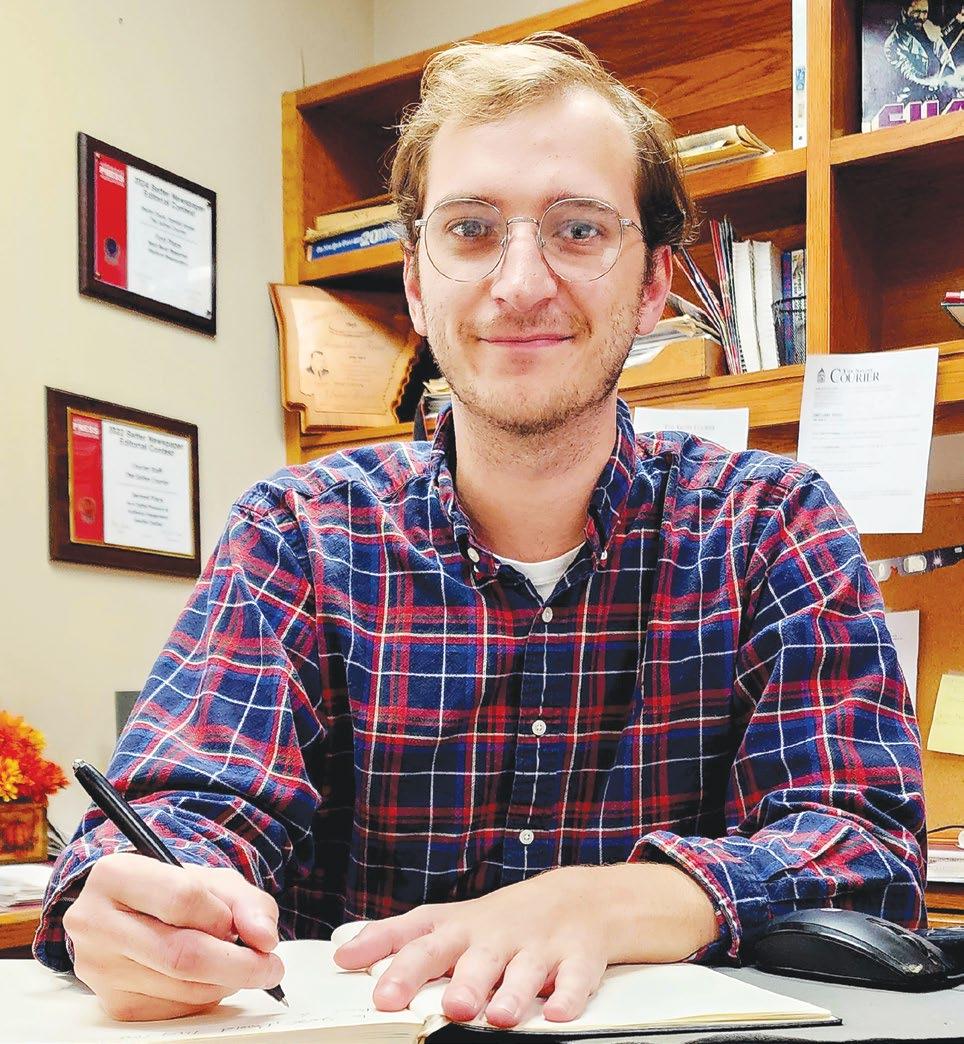
The Saline Courier had a booth at a job fair and Davis dropped off his resume, leading to his hiring as a staff reporter in August of 2021. His talent quickly became apparent, with the result being his elevation to the position of editor last month.
In his initial time at the newspaper, Davis focused on communitybased feature stories, then moved more into local political coverage, court proceedings and investigative journalism. “That really ignited me,” he said. “Working to figure out the truth is very gratifying, and I feel I am really serving a purpose. I think it is great that the community I grew up in still has a newspaper. And I really
“I have always liked to hear and tell stories. Working in journalism, I get to be a storyteller and an audience member every day.”
Davis is proud of the news staff at The Saline Courier, which currently consists of three reporters working under his leadership. “This is the most reporters we’ve had in the last two and a half years,” he said.
Major recent stories covered by the staff include controversy over the operation of the Saline County Library (and the firing of the library director), a lawsuit involving the pedestrian traffic death of Daniel Barajas on Interstate 30, and some of the complex issues surrounding the opening of Arkansas’ first Bucee’s superstore in Benton.
The Buc-ee’s article won first place for Best Beat Reporting in the Courier’s division in APA’s 2024 Better Newspaper Editor Contest.
“I feel we have really brought a lot of light to these issues, as well as many others,” Davis said.
There also are the positive community stories that a good newspaper searches for and reports. Such was the case recently with coverage of the death of long-time community businessman and civic leader Richard Mooney at age 101. “The response to that story was tremendous and really showed that people are still reading us,” Davis said.
The Saline Courier prints five issues a week, Tuesday through Saturday, plus a replica edition online along with a vibrant website.
Continued from page 1
“And ads are still selling well,” Davis said with satisfaction.
“One of the biggest positives are the people I get to meet,” he said. “The people who read and work at newspapers are always so easy to connect with. I’ve made some lifelong friends in the business. I’d like to specifically give a shout to my former editor, Randal Seyler. Not only did Randal make me a better writer and journalist, he also showed me a lot of movies, books and music that I would have never found otherwise because of my age. It can be hard for people with niche passions to find others they can connect with, but not in the newspaper industry. Everyone loves to read and write.
“I have also learned a lot from working with my publisher, Rhonda Overbey. Rhonda holds us to a high standard and because of that I feel like I learn something new or improve myself every day I come to work. Between her and Randal, I’ve had the chance to learn from people who have great experience in this industry.”
When away from work, Davis enjoys art, watching movies and reading. That he is a unique young man is evidenced by his taste in reading. He enjoys the classics, such as Herman Melville’s “Moby Dick”, “War and Peace” by Leo Tolstoy and “The Idiot” (his favorite novel) by Fyodor Dostoevsky. He also enjoys the works of novelists Kurt Vonnegut and John Steinbeck. True to his studies in college, Davis also focuses on books dealing with history.
Davis feels strongly about the importance of his work and its broad impact.
“Newspapers are essential to a healthy society,” he said. “I think it’s important for the public to be aware of current events. It always has been. But I think newspapers are becoming more important
because there are so many sources of misinformation online that people see on their social media. When I studied history classes in college, I spent a lot of time reading olds newspapers. At the newspaper, we write history every day.”
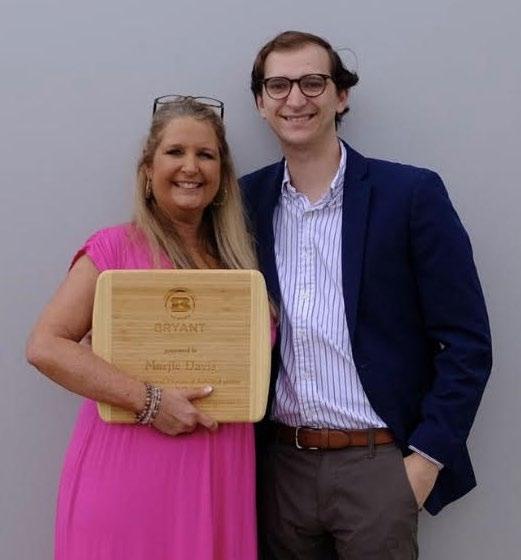
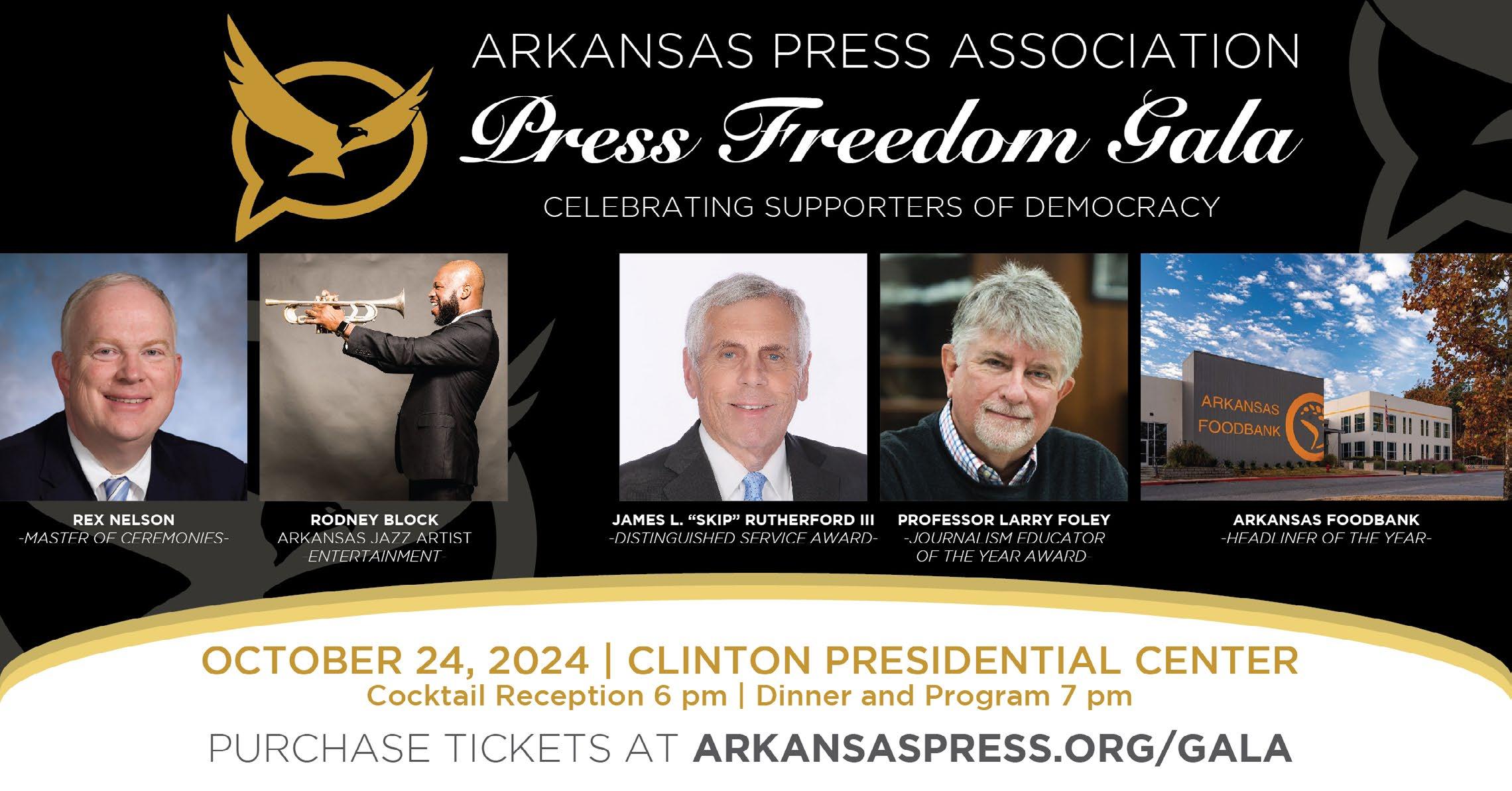
The Graphic in Clarksville has expanded its coverage area into neighboring Franklin County following the announcement that last week’s issue of The Spectator in Ozark would be its last.
The Graphic plans to add coverage of Ozark government, special events and school news as well as Ozark Hillbilly and University of the Ozarks Eagles sports. Former Spectator staffers Ruston Bronson, Vernon McDaniel and Robbi Roberts will be contributing to the newspaper.
“Since we for many years have had many subscribers and a general circulation in Franklin County, we have reached out to the city of Ozark’s public officials, Franklin County public officials and the school district to provide them with a resource to make their public notices available in The Graphic, so the citizens of their community can be properly served with their right to know,” said Managing Editor Megan Wylie. “We hope to publish Ozark area obituaries soon, as well.”
Through last week The Spectator was one of two newspapers based in Franklin County,
the other being the Charleston Express in the southwest portion of the county. While The Graphic already had subscribers in the Ozark and eastern Franklin County area, it is adding rack sales to assist those who were used to picking up The Spectator while running errands. “Everyone is still in shock about The Spectator closing,” said Wylie. “This week we put 100 newspapers in the Harps grocery store in Ozark, and are working on other locations. With our expansion to the west, our advertisers will see an added benefit of exposure to a broader audience, and Ozark advertisers will as well.”
“Ozark and Clarksville are long-time friendly rivals (well, most of the time),” wrote McDaniel in a column this week. “It’s nice that The Graphic will try to help a neighboring city retain its news coverage. What does the future hold for The Graphic and other small town weeklies? Only the good Lord knows. Nevertheless, I adhere to the Biblical passage that ‘faith without works is death.’ And we are all going to work hard and try to be successful.”
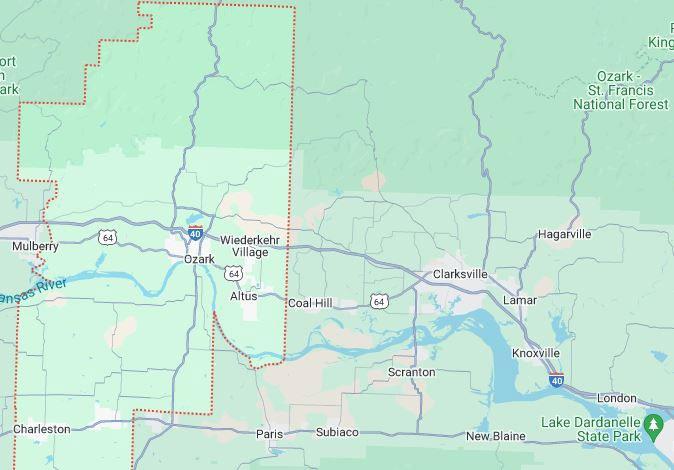
Newspapers who send Periodicals Class Mail are reminded that publication of the annual Statement of Ownership, Management and Circulation (PS Form 3526) is required in October, according to the following timetable, depending on the frequency of publication:
• Publications issued more frequently than weekly (daily, semiweekly, and threetimes-per-week publications) must publish no later than Thursday, Oct. 10.
• Publications issued weekly or less frequently, but not less than monthly, must publish the statement by Thursday, Oct. 31. This includes weekly, bi-weekly and monthly newspapers.
• Publications issued less frequently than monthly, such as quarterlies, must publish in the first issue printed after Oct. 1.
Owners may include paid digital subscriptions as circulation in postal statements. A paid subscriber, whether digital or print, may only be counted once.
Form 3526 serves as the method for the U.S. Postal Service to establish whether a publication meets standards for the periodicals mailing rates.
The Arkansas Newspaper Connection is a weekly newsletter published by APA connecting freelance and independent writers, editors, photographers and designers with Arkansas newspapers in need. Lists available job openings and other opportunities at Arkansas newspapers and associate member organizations. Send your listings to info@arkansaspress.org.
6 – 12
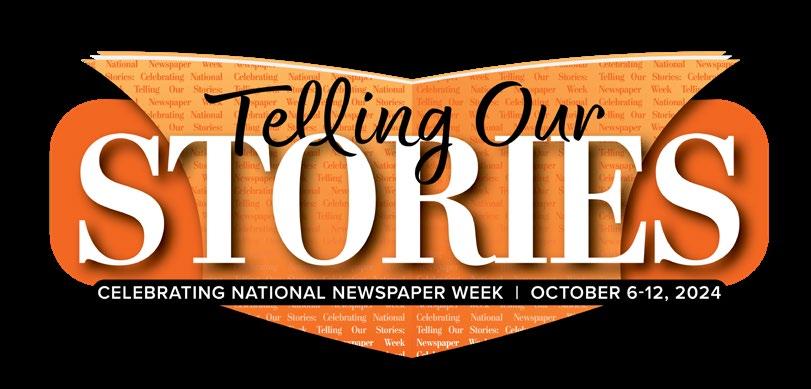
Next week will be the 84th celebration of National Newspaper Week.
Since 1940, Newspaper Association Managers has sponsored and supported National Newspaper Week, a week-long promotion of the newspaper industry in the United States and Canada.
Columns, editorial cartoons, house ads and social media graphics are available for newspapers to download at no charge at nationalnewspaperweek.com.
This year’s theme, “#TellingOurStories2024,” was created by the Kansas Press Association and is built around the unique role newspapers play in communities. Publishers, editors and journalists who make up the heart of our industry are invited to share their stories about why they are in the newspaper business by running house ads, editorials and editorial cartoons during the week.
“Every one of us has a story about what led us to this profession. Maybe it was the thrill of chasing a breaking news story, the joy of telling the untold tales of our community, or the drive to hold the powerful accountable,” said 2024 National Newspaper Week Chair and KPA Executive Director Emily Bradbury. “These are the stories that define us, inspire us, and keep us committed to the work we do every day. Our voices are powerful, and our stories are worth telling.”
As we prepare for 2025, APA needs your current rate cards and media kits. Please send rate cards, circulation info and demographics, if available, to rebecca@arkansaspress.org so that we can make sure we have the most upto-date information on file.

Volunteer judges are needed to review submissions from more than 60 newspapers in the Kentucky Press Association Better Newspaper Editorial Contest.
Judges will work at their own pace. All judging will be conducted online during November. Categories include News Writing, News Columns, Feature Writing, Editorial and Opinion, Sports Writing, Best Lede, Sport Photos, News or Feature Photos, Best Video, Social Media and Best Website among others. You may request more than one category to judge.
“Arkansas newspapers know what it takes to produce quality journalism,” said APA Executive Director Ashley Kemp Wimberley. “Our friends in Kentucky very graciously judged our editorial contest this past summer. It is now our turn to assist them and we are counting on our membership’s expertise for help in critiquing these entries.”
Please volunteer by Thursday, Oct. 31 by filling out the secure form at https://forms. gle/Leyxp1RX8ax96bPEA. If you have any questions, email Terri Cobb at terri@ arkansaspress.org or call (501) 374-1500.
Registration is now open for the 2024 ArkLaMiss Circulation, Marketing & Audience Development Conference, planned for Nov. 7-8 at the Ameristar Vicksburg Casino Hotel on the banks of the Mississippi River.
Popular sales and marketing trainer Ryan Dohrn will serve as this year’s keynote presenter. Topics to be discussed are marketing your publications, customer service and more.
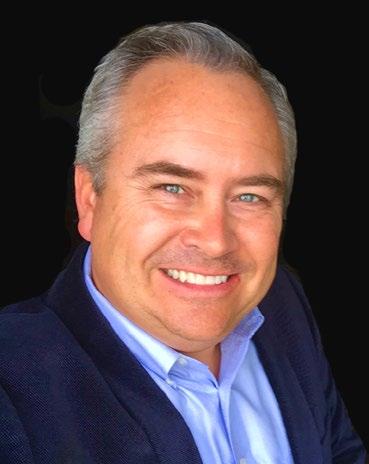
Register online at https:// mspress.regfox.com/ arklamiss-conference. For hotel room reservations at the special room block rate of $89 per night, call 601638-1000 and reference code 1107ARKLAMISS by Friday, Oct. 25.
ArkLaMiss is sponsored annually by APA and the Mississippi Press Association. MPA is the coordinating association for this year’s conference.




Last night, I noticed several similar messages in my inbox:
“Hey, Kevin. Do you have a column for us?”
“Hi, Kevin. Just making sure you’ll have a column for this month.”
“Kevin: Did I miss your column?”
You guessed right. I was late getting my column written. But I have a good excuse (my friend, Brian, sent me a book titled “Excuses” because I always have a good reason). I was late with this column because I’ve been inundated by newspaper requests over the past few weeks, and time just got away from me. Interestingly (at least to me) are the types of requests coming in lately. Sure, there are the usual requests to speak at conferences and help with technical issues. But since the end of summer, I’ve noticed a spike in three types of requests:
• Holding focus groups to grow newspapers
• Critiquing newspapers and suggesting changes
• Helping newspapers reach younger audiences
There’s a definite trend brewing here. It appears that newspapers – and these requests have been coming from papers of all sizes – are looking for and investing in permanent growth. It does my heart good (for my non-American readers, I checked Merriam-Webster. That’s an actual saying) to see newspapers investing in ways to create solid growth. I’m declaring the days of “quick fixes” and “new gadgets” over. The only way I’ve seen newspapers grow – and I see it all the time – is to invest in creating quality products that people want to read.
How do we get our readers back?
A
better question might be, “How do we grow new readers?”
By Kevin Slimp
I used to get depressed while walking through vendor areas at conventions and seeing “get rich quick” schemes. You know the ones I’m talking about. Thankfully, I haven’t seen as many of those lately. We may have learned that growing our papers takes more than a new scheme.
My question for you today is this: What are you doing to create permanent growth at your newspaper? For some, we may be spending a lot of time keeping our operations afloat, and that’s valid. But it’s possible to do two things at once. We can work at keeping our newspapers in business and plan for growth at the same time. I own three businesses, and I do both every day.
Here’s an example. I spend about half of my time in the book publishing world. My company publishes books for well-known authors and has a solid base of customers. It’s tempting to pump out book after book by established authors to meet the reading public’s demand. So we do that. However, there’s also a younger audience out there that’s often ignored. That’s why I spend a lot of effort finding younger authors who might not sell as many books as veteran writers but can serve as a foundation for our future. It’s working; our younger authors will be the best-selling authors three or four years from now. I’m working to keep the company afloat while planning for permanent growth.
At the risk of being repetitive, I ask again: What are you doing to create permanent growth at your newspaper? If it feels like you’re spending most of your time finding ways to cut expenses, you’ve got the “keep the company afloat” side of the
business covered. But just as necessary are your steps to create a viable product well into the future. According to The National Boating Safety School, “As soon as mass is displaced or the density is changed, the boat will no longer be able to float. It will not be able to maintain its equilibrium or waterline because its density will become greater than that of the water, and the vessel will sink.”
In simpler terms, our boats can only float so long. Then they’ll sink. We’ve got to find or create a new current, which is what many newspapers are doing.
How do you get started? I’m shocked at the number of papers that look more like shoppers than newspapers. Take an honest look at your newspaper and ask yourself, “Would I read that?” Hold a focus group. Gather community members together to look at your product and offer honest suggestions. Look at newspapers attracting younger readers – they’re out there – and see what they’re doing that you’re not doing.
These suggestions skim the surface but are proven ways to plan for growth. I don’t know about you, but I’m tired of looking at the past and asking, “How do we go back?” We can’t. It’s time to invest in the future.
Kevin Slimp is a popular consultant, advisor and trainer in the newspaper industry. From 1997-2018, Kevin directed The Newspaper Institute of The University of Tennessee. He currently serves as CEO of Market Square Publishing and Chief Guru at NewspaperAcademy.com. Email him at kevin@kevinslimp.com.
